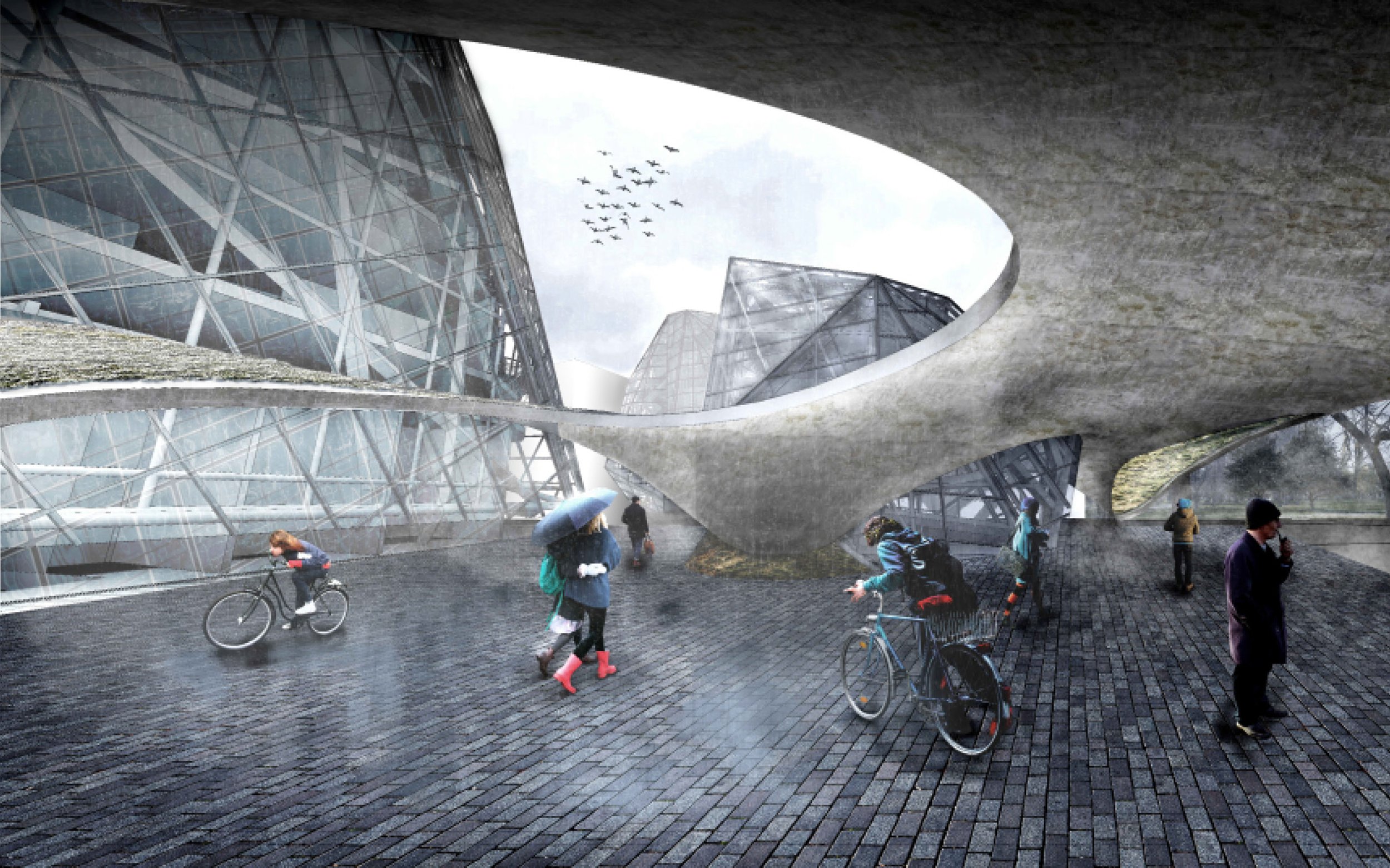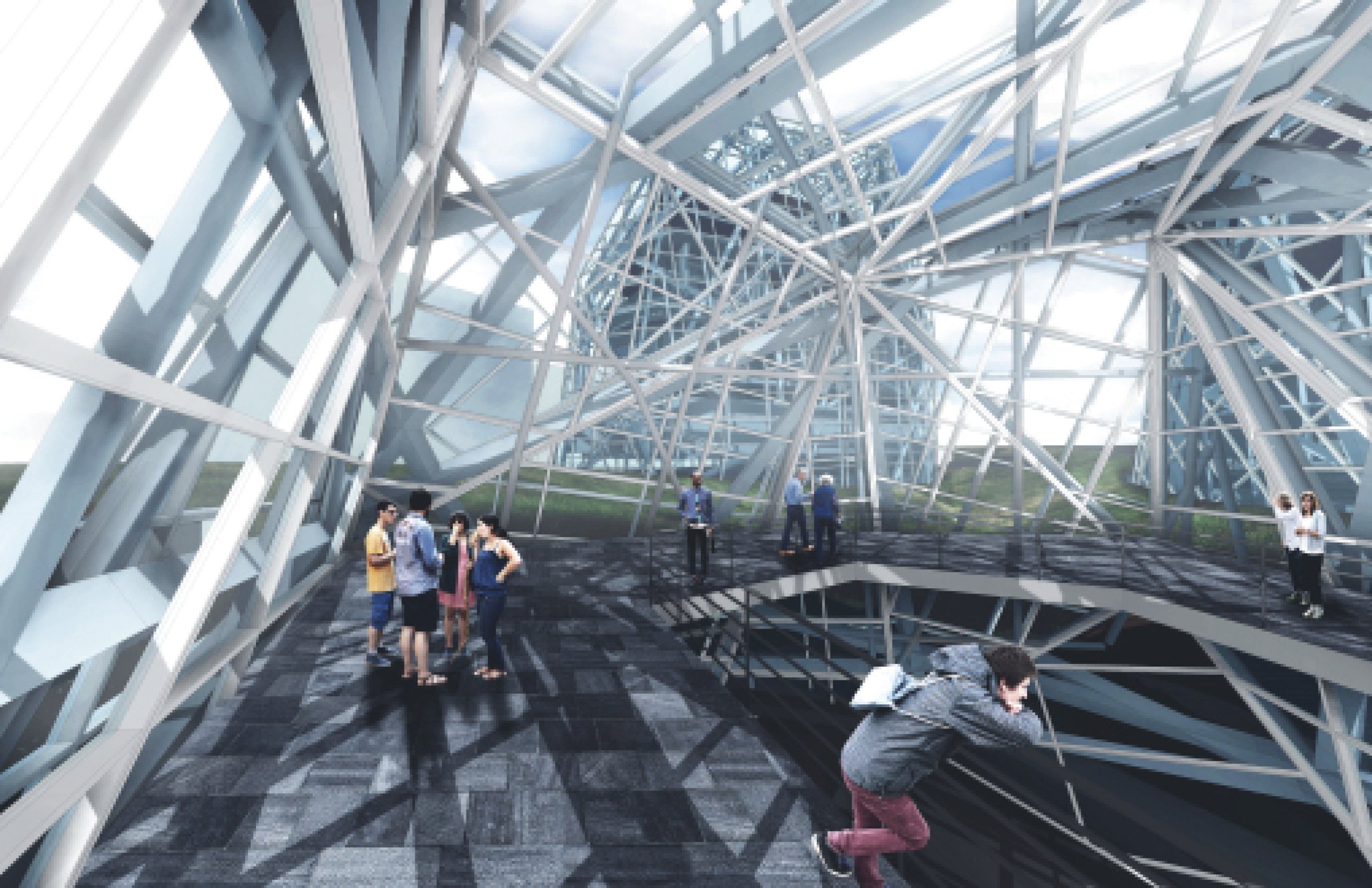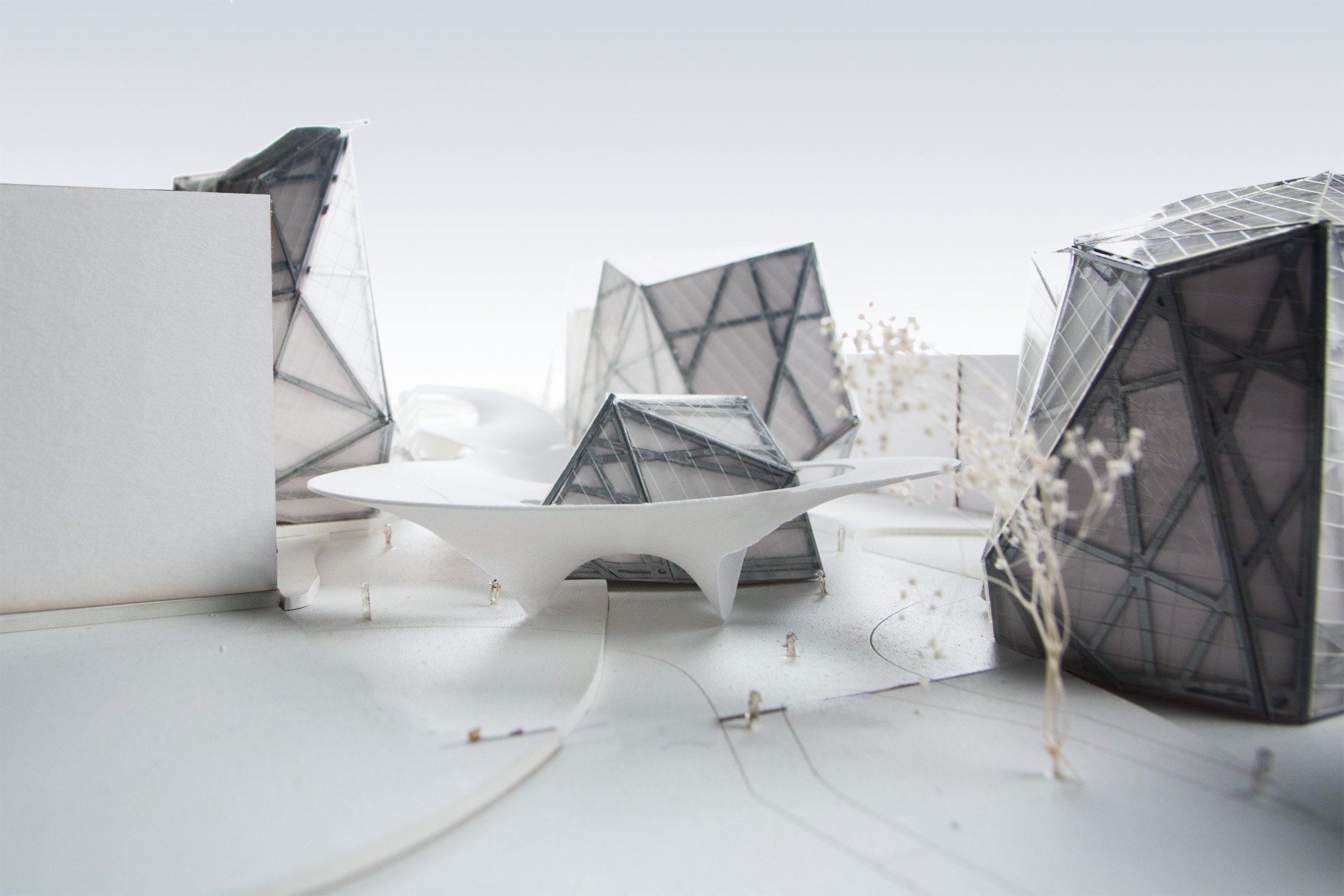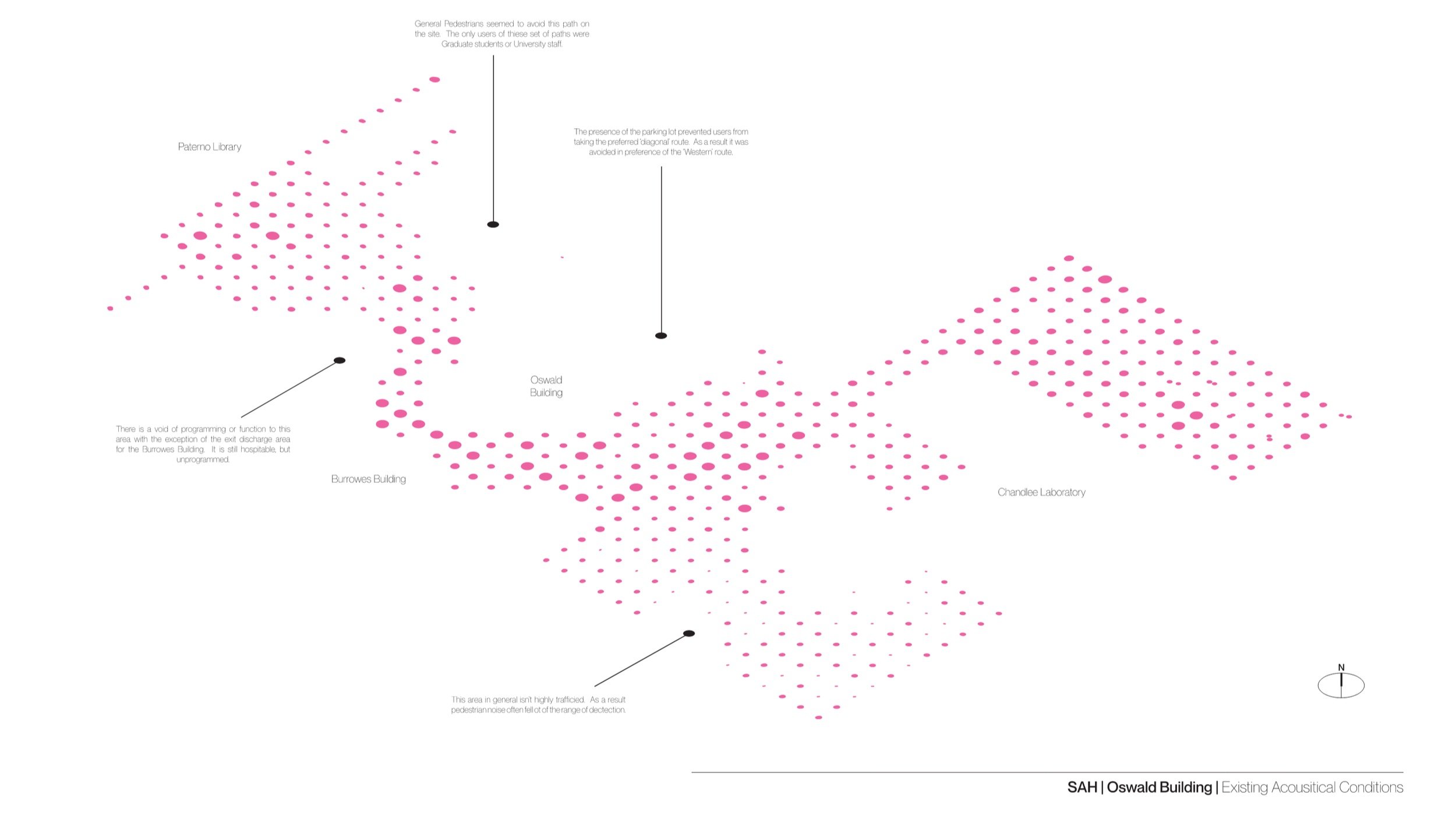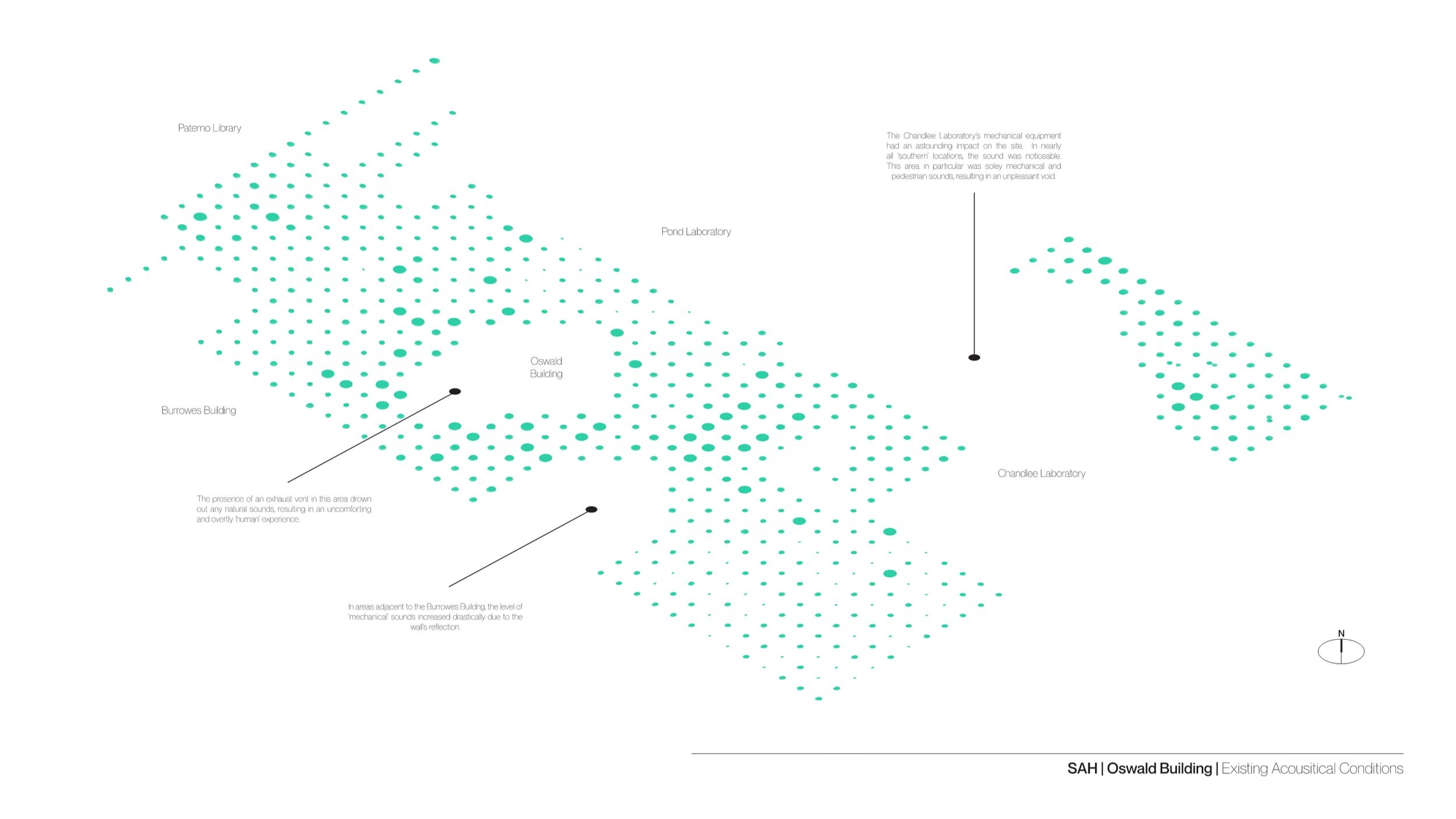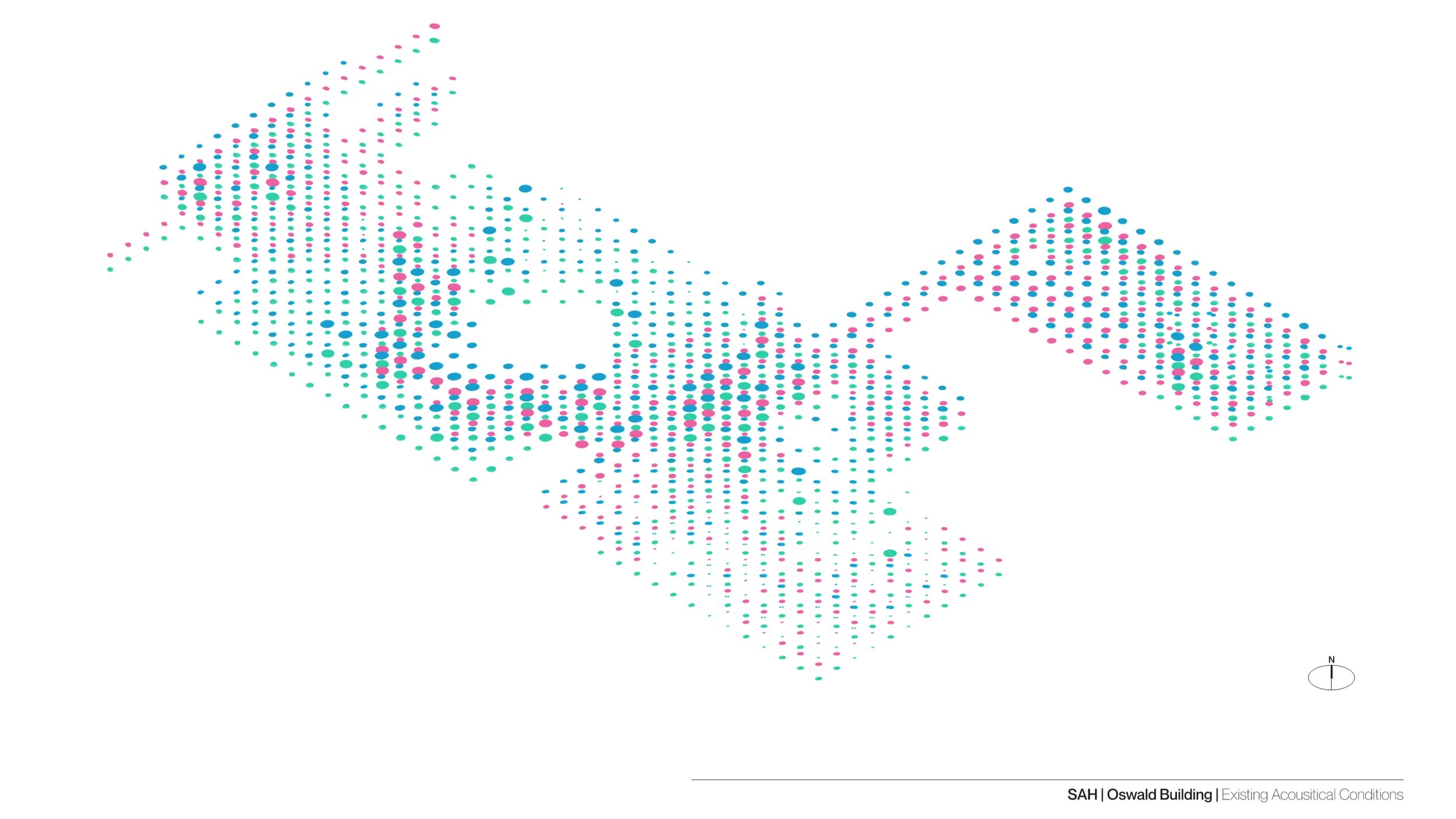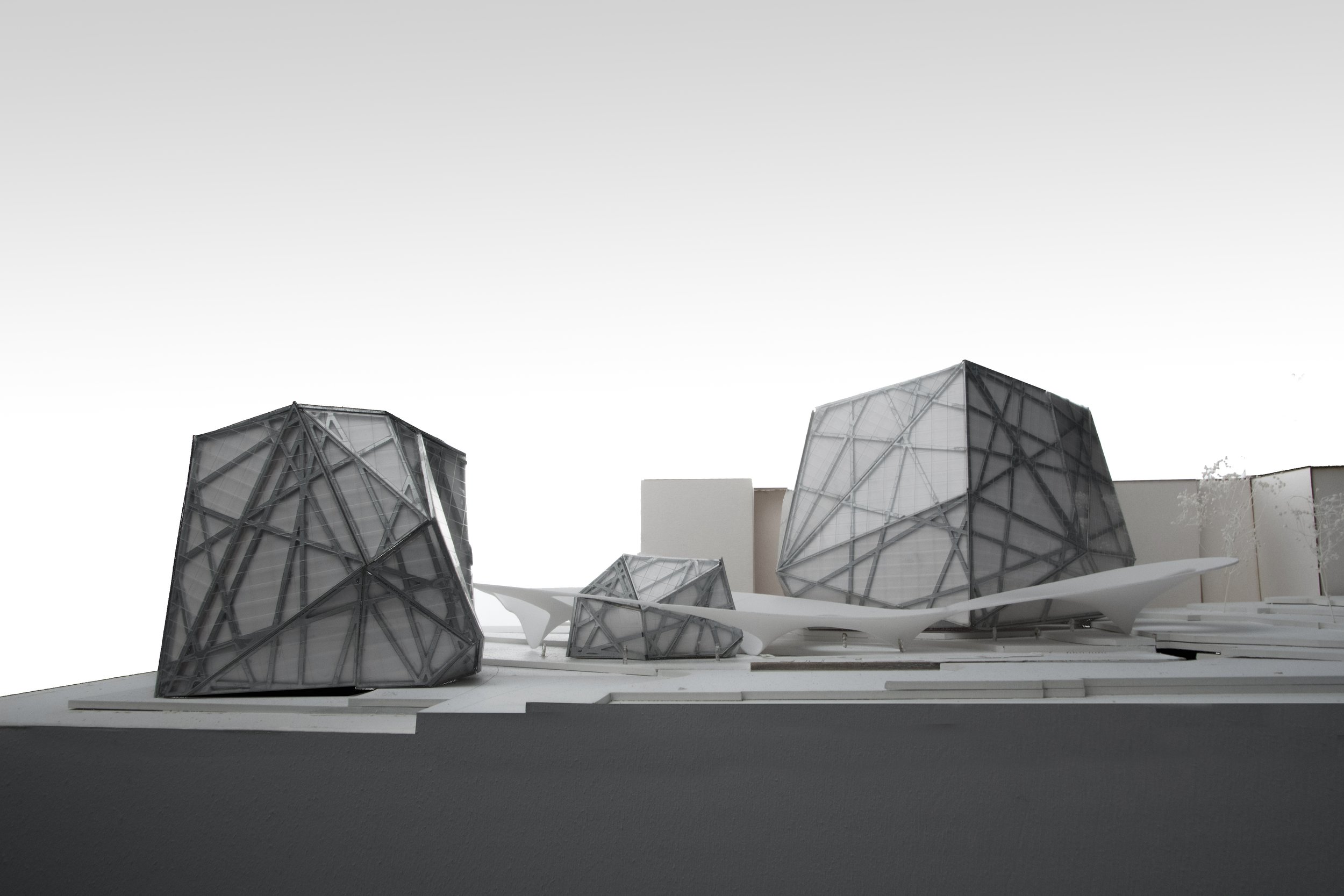
Can we create a new heart for the center of Penn State’s campus? How can we elevate the sounds around us? Can we combine Diamonds and the Rough?
Oswald Building Complex | University Park, Pennsylvania
Diamonds & The Rough
Course: Arch 331/Fall 2017 (14 weeks)
Location: Philadelphia, PA
Professor: Ute Porscke
Typology: Museum/Public
Individual Work
Bachelor of Architecture (Professional Degree) | Pennsylvania State University
The current museum in South Philadelphia has accomplished its mission of showcasing the art of mummery while also preserving the history of the storied tradition. However, as our society progresses to further into the 21st century, the current museum has struggled to keep up. It has also created a central un-affiliated space for mummery, yet caters more to visitors than to the mummers.
The new museum brings the art of mummery into the twenty first century and also expands on it’s original mission. The Philadelphia Center for Mummery seeks to not to simply showcase the art of mummery, but to also serve it. A central facility for the production of costumes and sets allows for all guilds—regardless of affiliation—to access professional equipment and facilities, while also providing storage space for larger pieces and elements. In it, both visitors and mummer’s are served under one roof.
PEDESTRIAN SOUNDS
ALL SOUNDS
NATURAL SOUNDS
LOCATION
The site is situated in the heart of the University Park Campus, among many university buildings. The program is calls to remove the existing tower and replace it with the Department of Education’s building.
MECHANICAL SOUNDS
CONCEPT DESIGN
PART 1.

The site sits in the heart of campus, amongst a grouping of buildings.
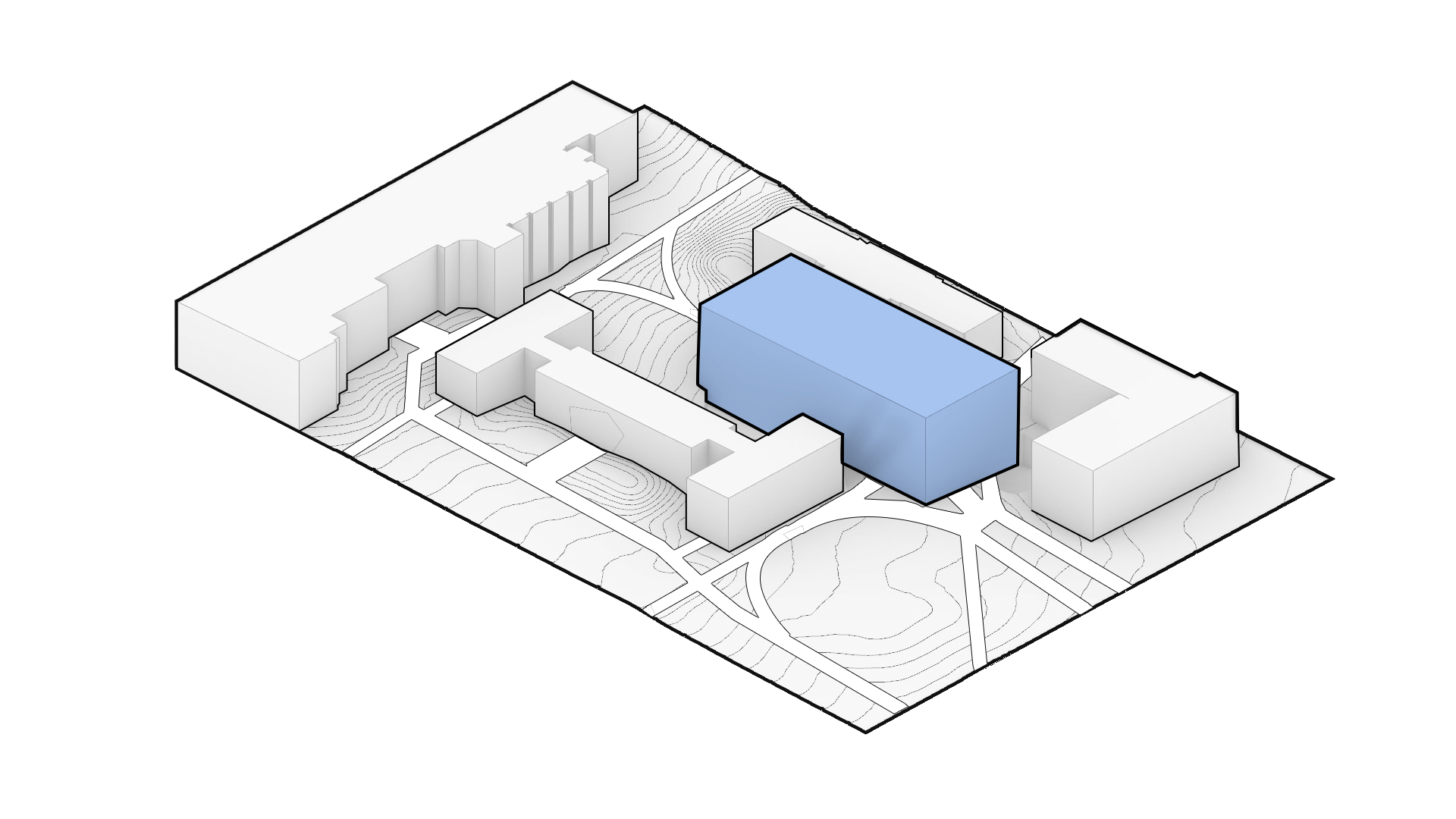
The large program overwhelms the site and is too large to allow movement around the area.
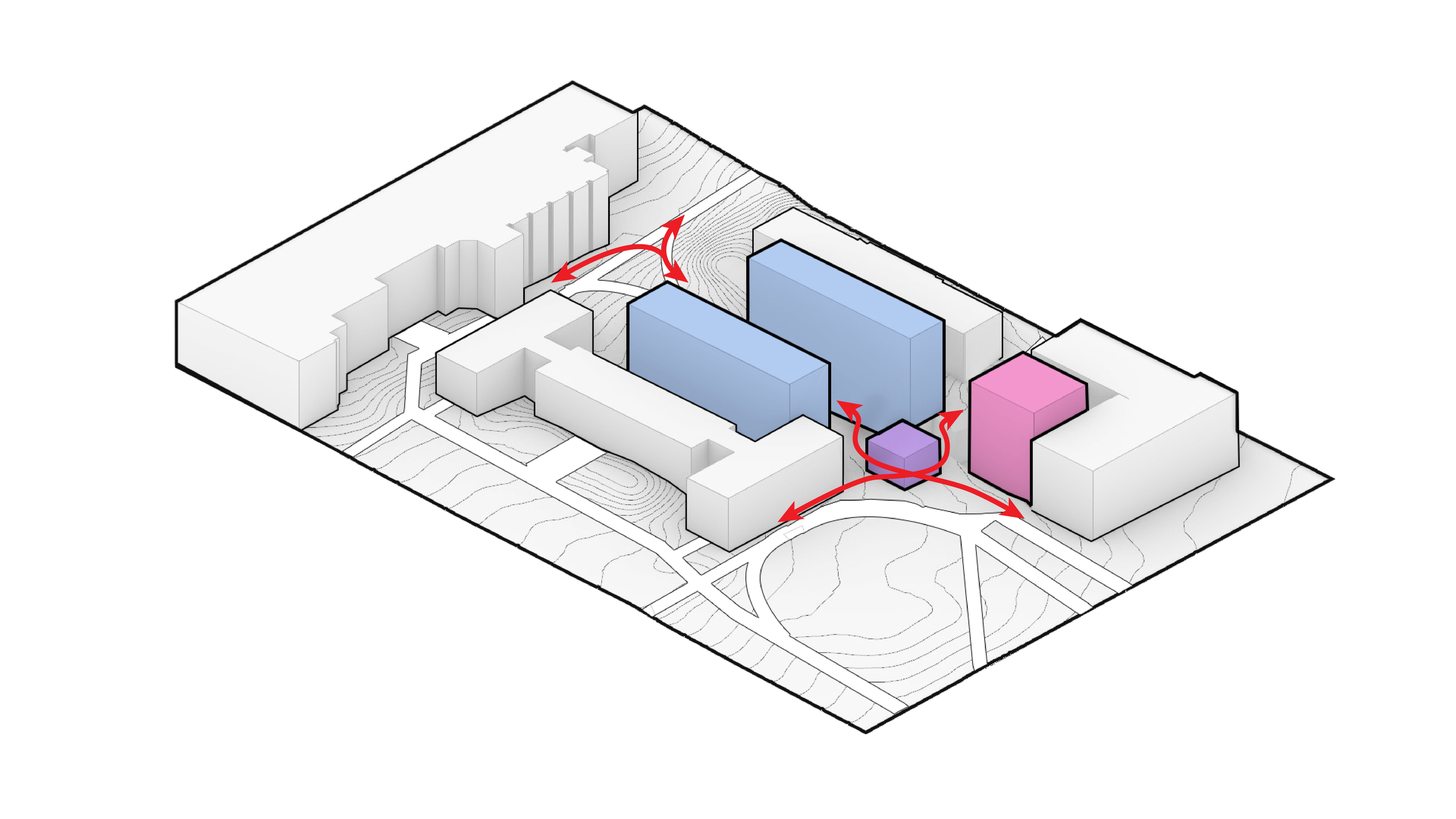
We proposed to break up the blocks into three distinct volumes to allow for circulation.
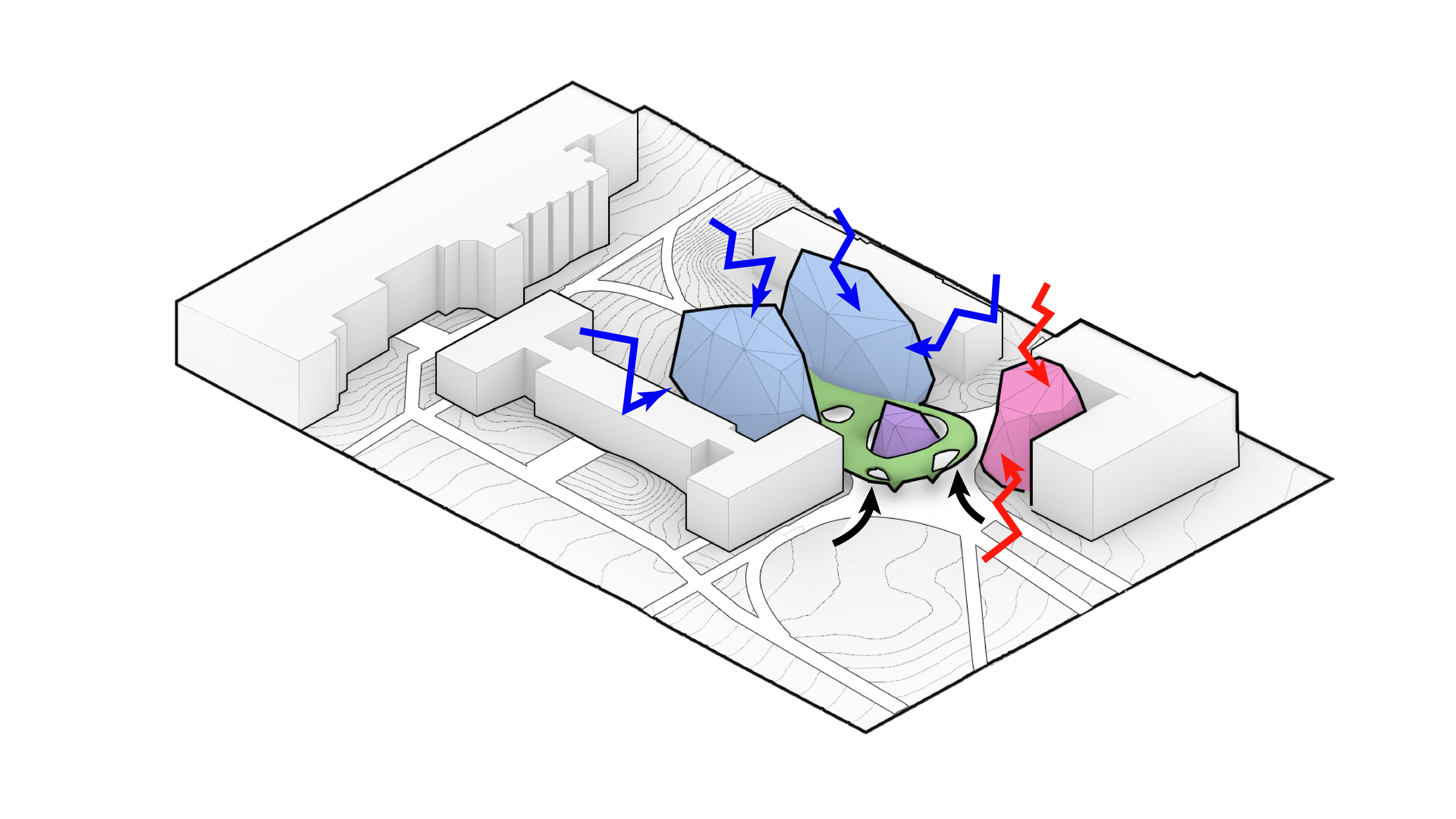
The buildings are crumpled to crystalline forms. We preserve the greenspace by lifting up the ground to allow for sheltered passage and to channel or block sounds.
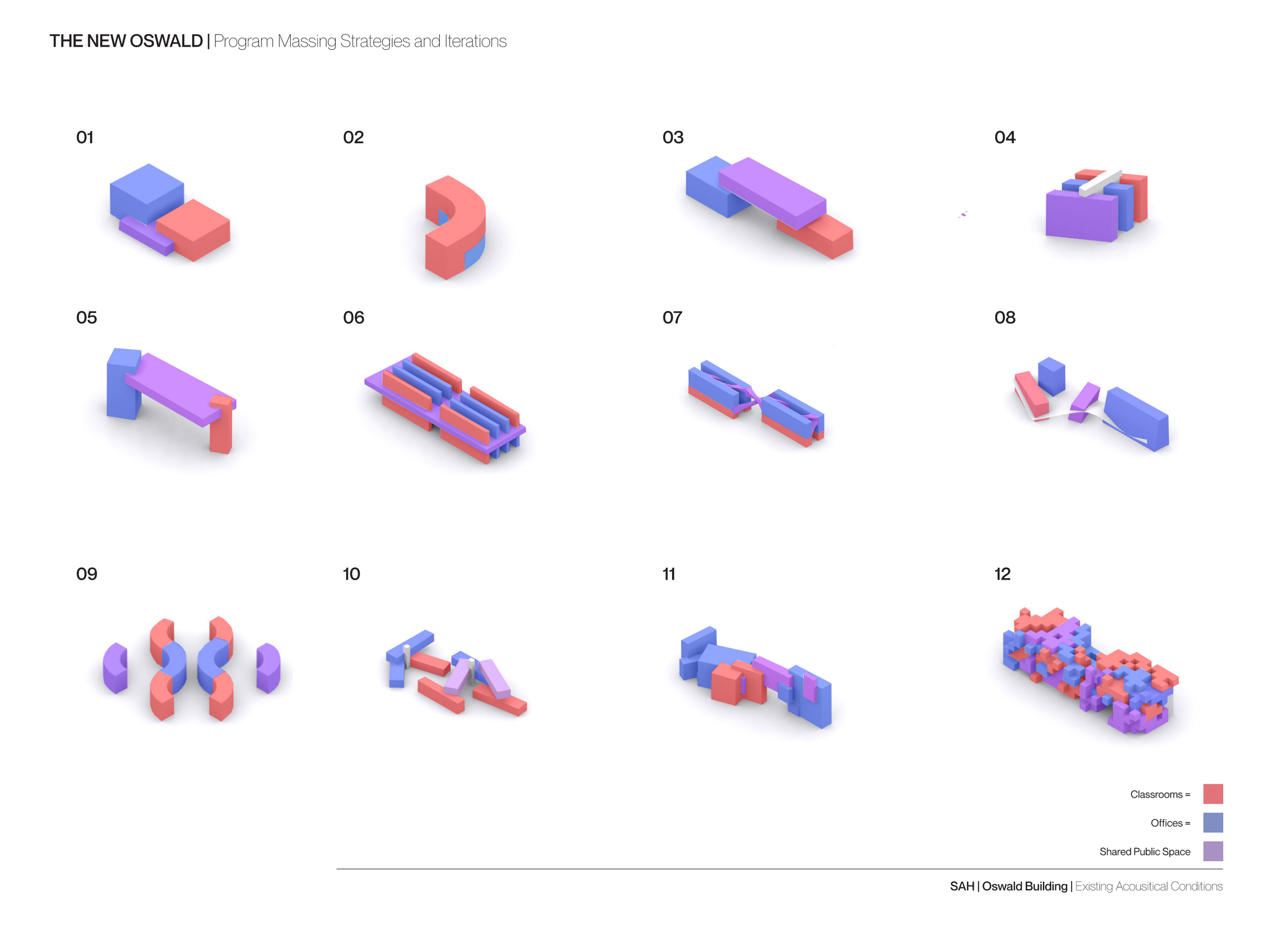
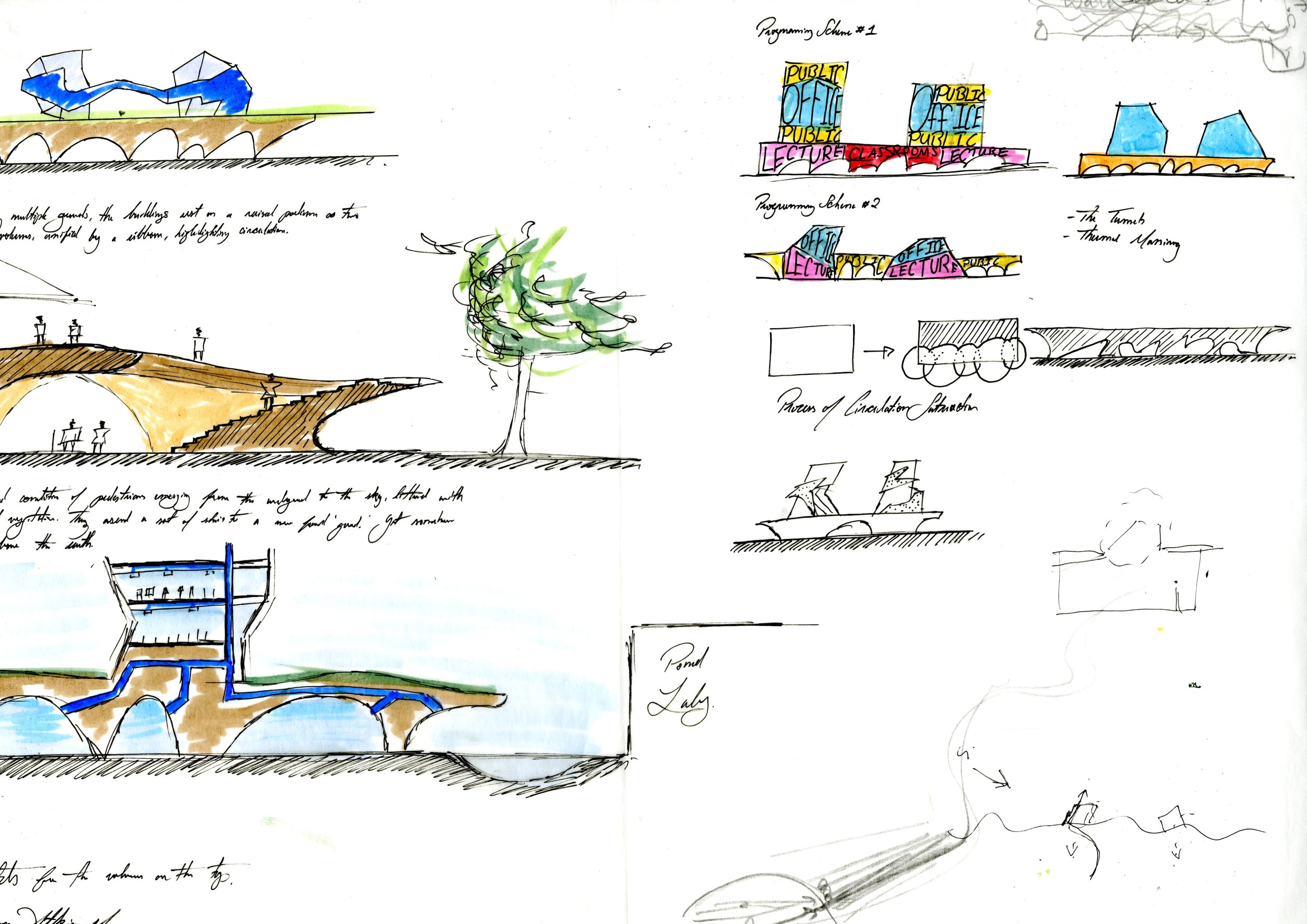

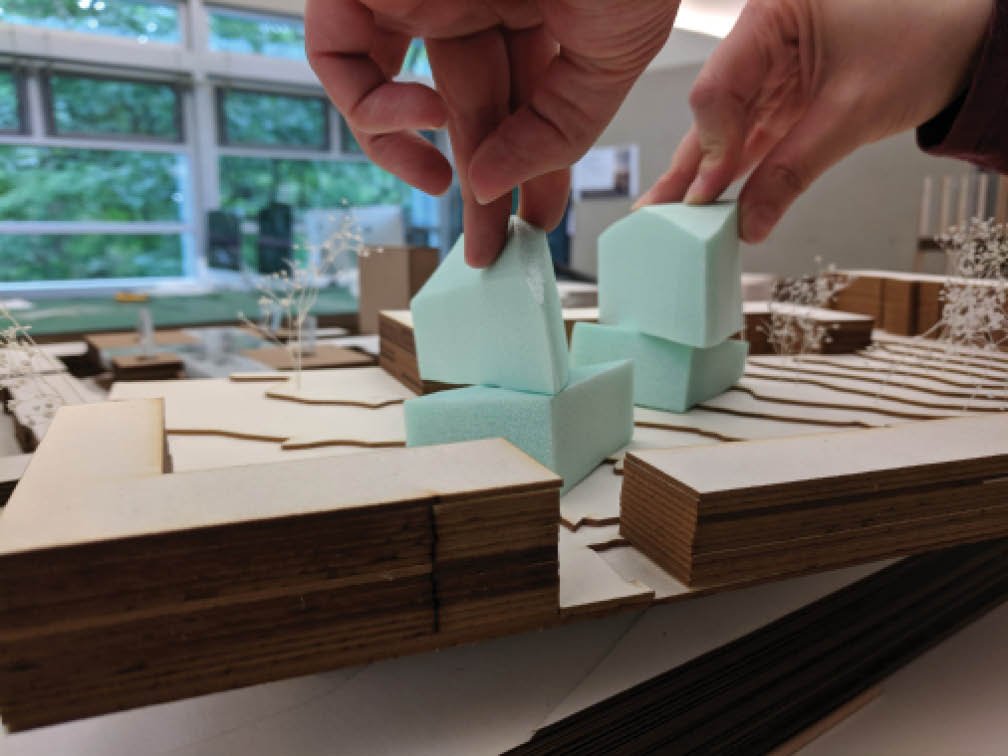
DESIGN DEVELOPMENT
PART 2.
